Blue Whale is the biggest animal in the world, there is no other animal else that can be identified as being larger than a Blue Whale.
How big is a blue whale?
The average length of adults blue whales is 79 ft (24.1 m).
In fact, they’re the biggest to ever live. That means the biggest dinosaurs didn’t match the size of a Blue Whale.
These marine mammals are so big that a car like mini cooper is similar in size of blue whale heart, and their tongue alone can weigh more than a fully grown elephant!
Largest blue whale
The reported longest whale was 100 ft (30.5 m) in length.
However, a single, blue whale was 98 ft (29.9 m) for the most length measured scientifically, from the rostrum to tail notch.
Blue whale weight
On average, Antarctic males weigh 112 tonnes, and females weigh 130 tonnes.
If you are looking for information about some fun facts, below is the list of 10 facts about Blue Whales:
10. Hippos are closest living relative to whales
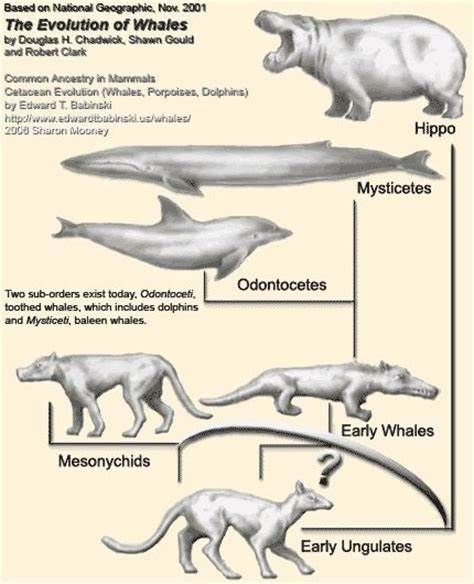
Fossil study of the long-extinct animals that lived on this planet million years ago confirms that Cetaceans (Ocean mammals) are the closest living cousins of the Hippopotamus.
The analysis of their fossils especially their teeth led the Paleontologists to conclude both Balaenoptera and hippo came from an anthracothere forefather.
These animals migrated from Asia to Africa about 35 million years ago.
It probably swam there as Africa was then an island surrounded by water.
All this means that the modern hippo has evolved in Africa independently and is a truly native animal on the continent.
9. Blue whales don’t sleep like us
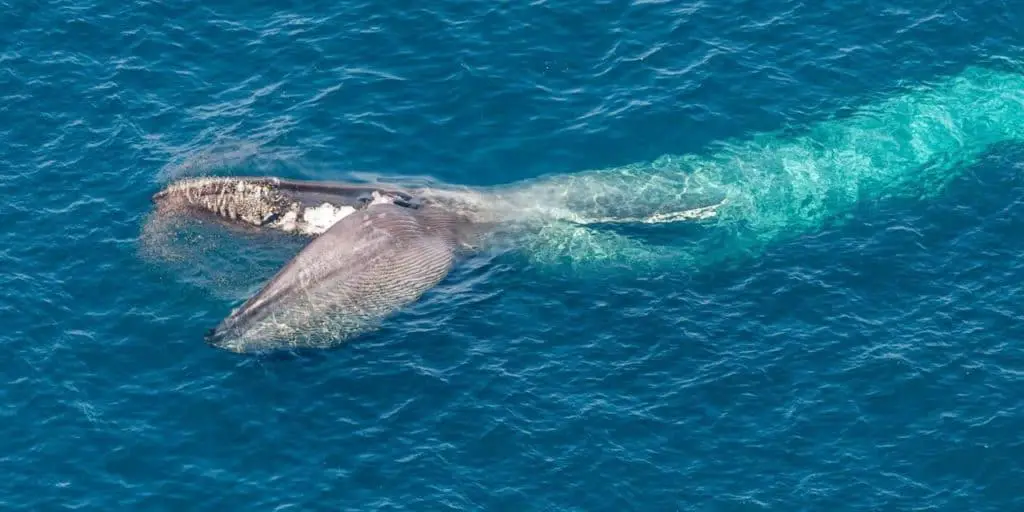
It is one of the interesting Blue whale facts that like most sea mammals, they don’t sleep like us (terrestrial mammals).
If a blue whale sleeps as other mammals do, they will drown in the water deeply & may die due for suffocation.
Evolved with an involuntary respiratory system, only half part of their big brain is closed down during sleep.
The other part remains ready for controlling the blowhole and starting each breath.
They stay silently in a flat place when the whales sit or float slowly next to another whale. It is renowned that sperm whales rest vertically.
8. Whale “vomit” is used to make perfumes & is very expensive

A Blue Whale’s diet comprises krills (Shrimp-like creatures) and can eat up to 40 million krill per day.
But just like any warm-blooded mammal, it sometimes vomits.
Ambergris is marine excrement produced from the abdomen of whales that is thought to help digestion.
Discharged from the deep inner water away from the coast, it gets soft and rancid when vomited.
Years of saltwater and wind exposure turn it into something like a rock with a waxy texture and a pleasant smell.
A chunk of ambergris weighing 7 pounds can amount to more than $50,000.
It is extremely valued not only because it is rare, but also because it is difficult to discover an artificial replacement for it as a perfume base.
7. All Marine mammals have nose like us (sort-of)
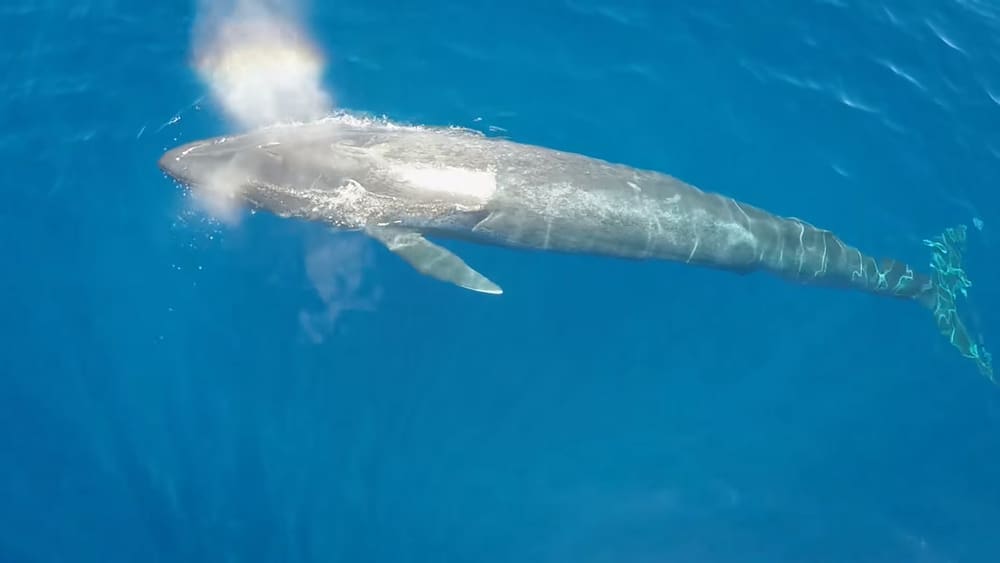
Blue Whales, like fish, can not extract oxygen from water to breathe.
A blowhole is on top of their bodies and is used when swimming to the surface to inhale and exhale in a large amount of air.
There is a misconception that Whales exhale water, Its actually warmer exhaled air, this warmness condenses the water, hence, fountain look.
A Blue Whale, unlike other species, has two rather than one blowhole.
They can maintain their breath submerged for up to 35 minutes.
The nostril (blowhole) is so big that a human baby can crawl through it.
6. Blue Whale milk’s texture is like a toothpaste.
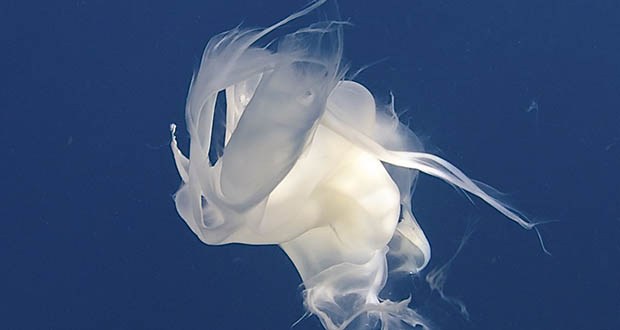
Whales generate milk as all mammals do to feed their babies.
It is one of the unusual information about whales that the mother provides her baby milk by enabling it to nurse or squirt to its mouth from the nipple.
The level of 35 percent-50 percent fat in the milk makes it as thick as a toothpaste. This texture allows it to pass without dissolving up with water.
A baby blue whale calf needs around 300 liters of milk every day, that’s the rationing amount of milk for an average family for the entire year.
5. Blue Whales’ life expectancy is more than 80-90 years in the wild.
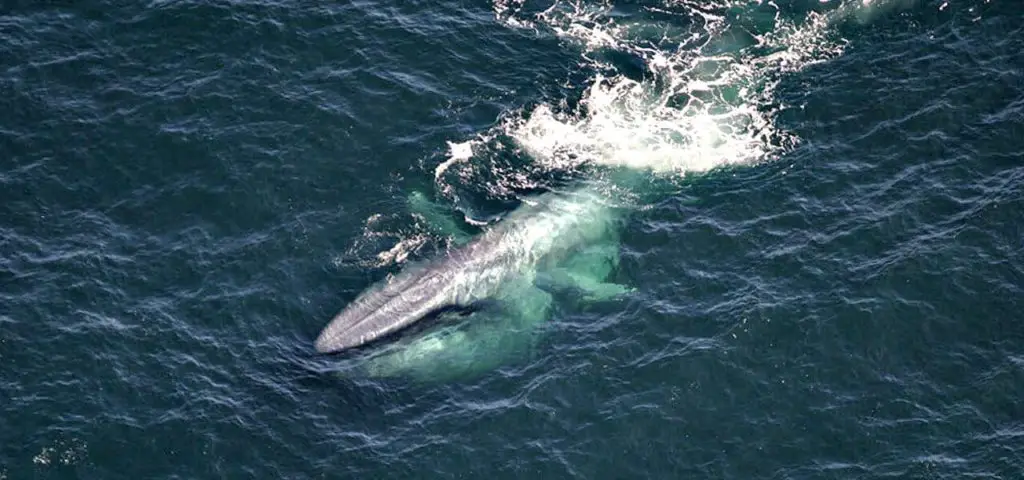
Blue whales are animals like humans recognized to inhibit the ocean with an approximate lifespan of 80–90 years.
It is estimated that the oldest recorded blue whale will live up to 110 years!
A lot of variables can determine how long a blue whale is likely to survive when it gets to maturity.
Some of these variables include hunting bu humans, food shortages, nutrition safety, weather change, air and noise pollution, emotional and physical health such as injuries are some factors that influence their age.
4. Blue whales are not actually blue
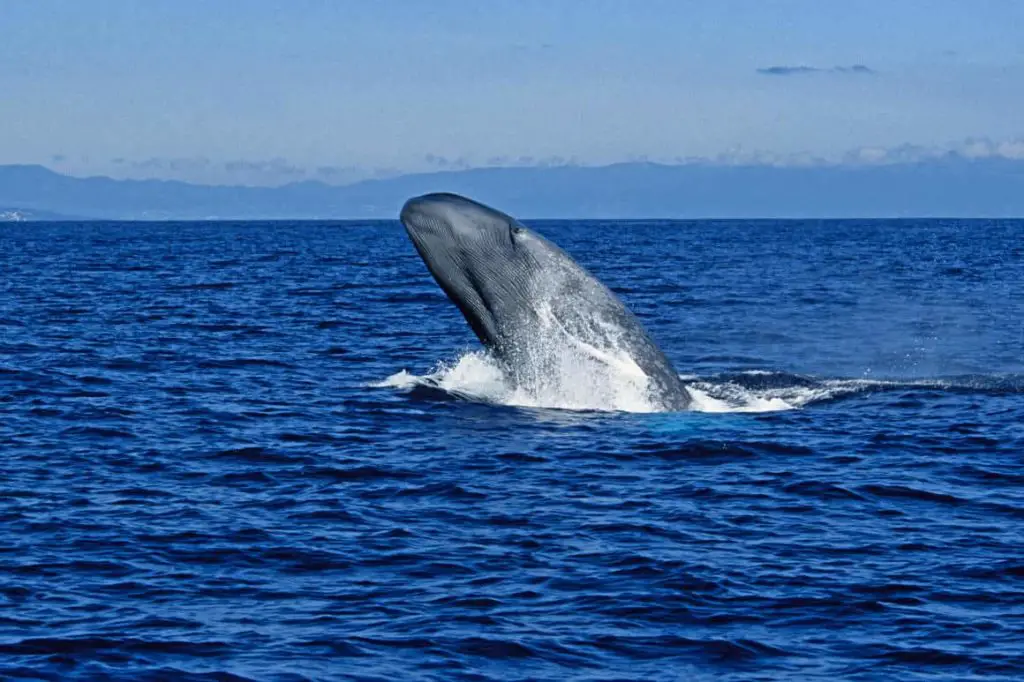
Yes, Blue Whale is not blue colored, but they appear blue. How can that be?
Well, when viewed underwater, they appear solid blue.
Their actual color is mottled gray, and we can see it when they are taken out of water.
The blue color, however, is only on the upper side of their massive body.
A blue whale’s underbelly has a yellowish hue color. This hue, however, is mainly because of millions of microbes living on their skin.
3. Their voice is really very loud

Not only are the Blue Whales the world’s largest animals, but they are also among the loudest.
A jet engine’s sound can record up to 140 decibels, a blue whale’s call reaches up to 188 decibels.
They usually produce moans, groans, and pulses, and can hear each other easily from a distance of 1,000 miles if conditions are right.
That means they’re not only very loud, but their hearing sense is also very powerful!
Using sounds and songs (yes), they usually communicate with each other.
Yet, using their vocalizations and their hearing abilities to navigate through the ocean depths where light can not reach.
The system is called navigation through echolocation.
2. Blue whales can increase their speed up to 31 mph
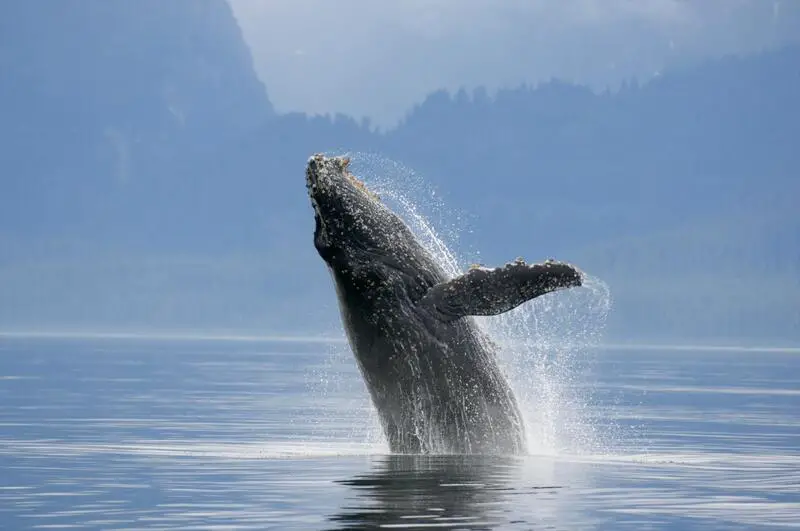
Migration and Habitat
Blue whale habitat is worldwide, but they follow regular seasonal patterns.
They enjoy summers feeding in cold waters of polar regions and make a long trip back to equatorial regions of the Indian ocean as winter comes along.
This seasonal migration is because krills move towards warmer waters in winter.
Traveling a long-distance like this with their massive body is not an easy task.
Their normal cruising speed is around 5 mph, but they can increase their speed and swim at a speed of 31 miles per hour, though, if they get agitated somehow.
1. Conservation status

We, humans, are insignificant, and for our pure appeasement, we can ruin anything.
Why are blue whales endangered?
By the first half of the 20th century, Blue Whales were almost on the brink of extinction because we killed them at large scale.
About 360,000 of these beautiful creatures were killed by us.
Why have they been slaughtered?
Just because of whale oil. This whale oil as valuable and have many medicinal properties.
In 1996, The International Whaling Commission stepped forward to protect these creatures.
As of today, here are only 4,500 (or less) Blue Whales remaining on this entire planet.
Whales like sperm whales, humpback whale, killer whales, and blue whales are endangered not just because of hunting, there are various reasons like,
Increasing ocean pollution because of human behavior threatens their existence.
They also die for oil spills (from oil tankers), changes in environmental conditions (which is again mainly caused by human activity), high ocean traffic, and ship strikes, they often collide with big ships and end up dead.
Of natural food-chain, Blue Whales are very important for the balance of the oceanic ecosystem and have equal rights, as we humans have to live on this planet.
These were some amazing facts about the blue whale for kids.
If you really want them to survive, share this post on your social media & make sure your friends know about the information.
Create awareness & compassion to save these helpless animals🐋.


Blue Whales are amazing creatures…save them
I’m very happy that I came across this in my ѕearch for something concerning
this.
The aquatic life has always been a joy for me to explore. It is amazing how water holds this much.